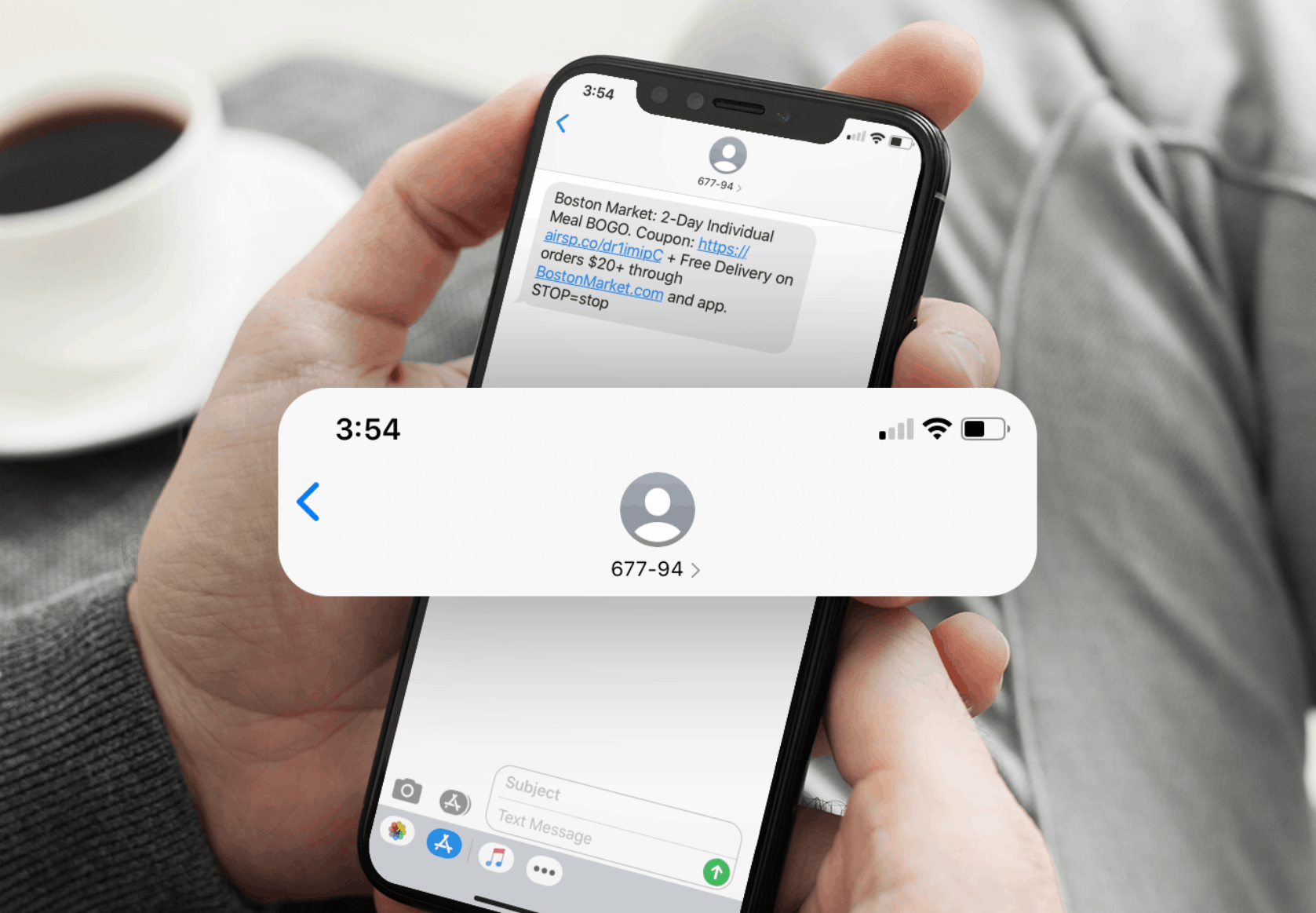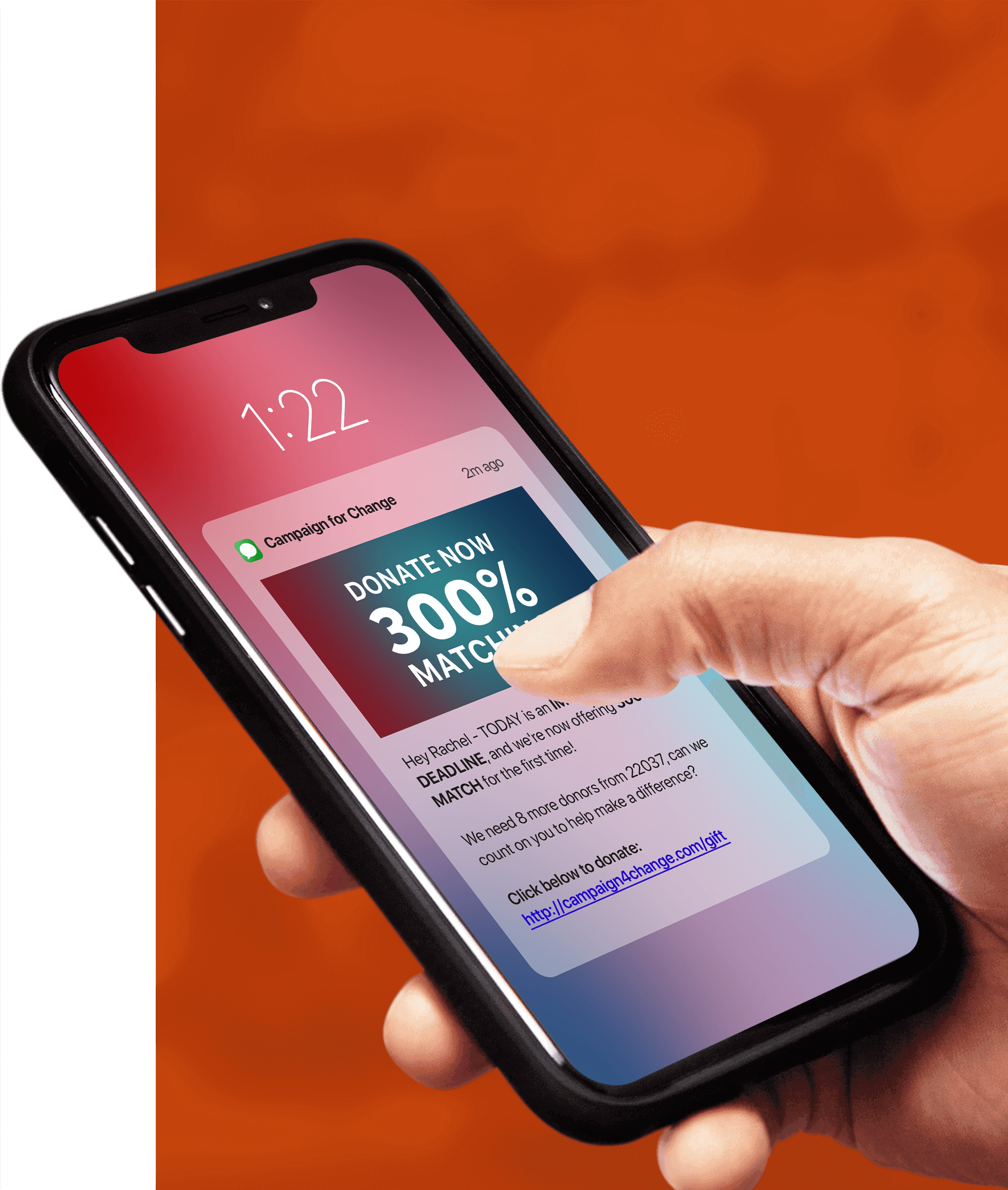1,168 Views
Shared SMS Short Code Warning—April 27, 2020 Update
Since we published this post, a lot has changed with regard to SMS shared short codes. Read our blog post, The Problem with Shared Short Codes, for more information about why we no longer recommend businesses use shared short codes.
In the video above, Tatango CEO Derek Johnson answers the question, “What is a shared short code?” Prefer to read? No problem, see the post below. You can also find answers to all your SMS marketing questions in our Q&A video library.
What Is A Short Code?
An SMS short code is a 5-6 digit phone number that brands and organizations use to communicate with users who opt in to their SMS marketing program. Users subscribe to receive SMS and MMS messages on their mobile phones by texting a corresponding keyword to the short code. AT&T, T-Mobile, Verizon, and other major wireless carriers developed SMS short codes as an alternative to standard 10-digit mobile phone numbers. Compared to traditional 10-digit phone numbers, SMS short codes, which are about half the length, are much easier for consumers to read and recall. For example, a short code number could be 12345 or 123456.
What Is a Shared Short Code?
A shared short code is a single SMS short code used and paid for by multiple brands. A shared short code is different from a dedicated short code, which is used and paid for by only one specific brand. When using a shared short code, all text messages, no matter which brand or organization sends it, arrive on the subscriber’s mobile phone as the same 5-6 digit SMS short code number. This means if you’re receiving text messages from Paul’s Dry Cleaning and Joe’s Pizza, and they’re both using the same shared short code, both of their messages will arrive on your mobile phone from the same mobile phone number. When interacting with their subscribers, different brands use their own unique keywords to differentiate SMS campaigns on the same short code.
To illustrate a shared short code example, let’s use the shared short code number 12345. If Paul’s Dry Cleaning and Joe’s Pizza are both using 12345 to send messages, the keyword will differentiate the campaigns. Paul’s Dry Cleaning could use the keyword “CLEAN,” and Joe’s Pizza could use the keyword “PIZZA” to enable customers to opt in.
Why Do Brands Share Short Codes?
Shared short codes have advantages and disadvantages. Before we discuss the downsides of using a shared short code, let’s talk about the biggest benefit shared short codes present. One of the most common reasons brands decide to use shared short codes rather than dedicated short codes is the cost advantage. With a dedicated short code, a brand is wholly responsible for the lease, which can range from $500 to $1,000, depending on the type of short code, vanity or non-vanity. On the other hand, shared short codes allow brands access to a short code number for a fraction of the cost. The shared short code provider still pays $500 to $1,000 per month but sells access to the short code to tens or hundreds of brands and organizations. Because each brand that uses the shared short code shares the cost this is a low-cost solution for brands and organizations that can’t afford a monthly lease of $500 to $1,000.
Why Don’t Brands Like to Share Short Codes?
Shared short codes provide a solution for brands and organizations searching for affordable access to text message marketing, but they also present more risk. When a brand shares a short code number with other brands, they also share the cost and risk of other brands using the short code incorrectly. For example, if Brand A and Brand B are both using the same shared short code number, and Brand A misuses the short code, both Brand A and Brand B won’t be able to send messages if the short code is shut down. Depending on how many brands share a short code, one brand’s actions can impact countless other brands.
The second risk shared short codes present is the probability that consumers mistype keywords when opting into a brand’s text message marketing campaign. When this occurs, it triggers a response by the shared short code owner, instead of the brand itself, which can confuse the consumer and cause a negative customer experience. Also, since many brands share the same short code, there’s a chance that a consumer could opt in to multiple brands’ SMS campaigns, resulting in the consumer receiving multiple brands’ SMS campaigns from the same short code. As you can imagine, this can be confusing for the consumer and isn’t ideal for brands since they have to compete for a consumer’s attention within the same message thread. Brands can also be unintentionally associated with each other. This can lead to negative brand-consumer attitudes since some brands might not want to be associated with other specific brands.
For information about text message marketing compliance, check out our compliance videos.
Use a Shared Short Code or Get Your Own Dedicated Short Code
Shared short codes provide a solution for brands seeking an affordable way to utilize text message marketing. Dedicated short codes present a solution for brands that want the flexibility to create unlimited keyword campaigns, access the highest messaging speed available, and have total control of text message marketing campaigns.
Are you interested in a dedicated short code for your brand or organization? Chat with one of our SMS marketing experts.

